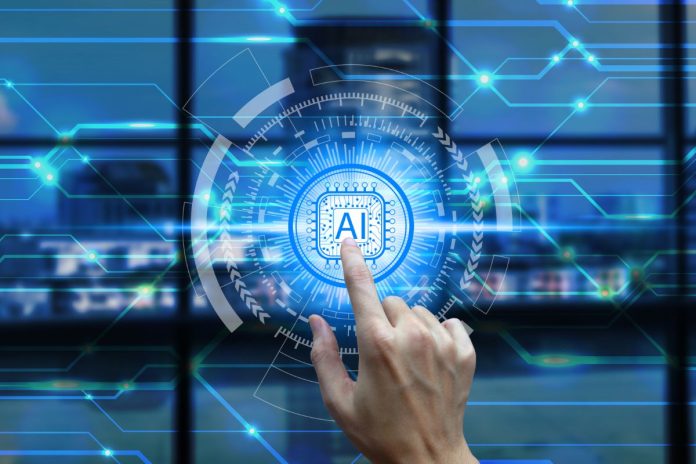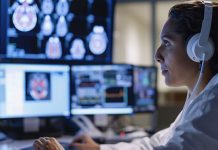Andrew Ryu, executive chairman of Datametrex AI, says rural residents have poor access to quality healthcare. They are often underserved by the medical community. When they fall sick, many of them have to go to hospitals in urban areas. Similarly, some rural areas have good hospitals but the residents can’t afford the fees. Therefore, those who are unable to get treatment may have complications or die due to complications. This is why diseases are prevalent in places without good healthcare.
Also, many people live in advanced countries that can’t afford quality healthcare. People with low incomes or who come from low-income families can’t spend much on hospital bills.
This has led to inequality in the healthcare system. Because of this, the government and healthcare stakeholders are trying to bridge the healthcare gap among the masses. One way of doing that is introducing Artificial Intelligence (AI) to the medical world. The aim is to improve the quality of medical services patients receive.
According to Andrew Ryu, artificial intelligence is the use of computers, machines, and robots to make life easier.
Andrew Ryu is an entrepreneur based in Canada and also the Chairman of Datametrex AI Ltd. He has headed (and currently heads) many executive positions in different companies. Datametrex is a cybersecurity and health security firm. Datametrex AI Limited uses AI technology to solve their clients’ healthcare security issues.
Artificial Intelligence in the Healthcare System
Ever since the introduction of Artificial intelligence (AI) to the world, it has been utilized by many sectors. One such sector is the healthcare sector. AI is used for diagnosis, treatment, and therapeutic purposes in medicine. AI systems have data interpretation features that help medical practitioners to know their patients’ conditions. It will also help doctors in making a suitable treatment plan.
Artificial Intelligence can be used in many ways to improve the healthcare system.
They are:
1. Healthcare Problem Identification
The ever-evolving technology has brought along a big load of data. The reason is that the more industries use technology, the more they store data and need data storage devices.
Healthcare workers attend to numerous patients every day. They need to put all details of their patients into the computer system. Gradually, patients’ information accumulates and turns into medical data. After a while, this data increases and occupies storage space in the computer. When the data becomes too much for the computer to handle, it will crash.
Similarly, when there is a lot of data on the computer, medical workers will find it difficult to find important data. This is where AI comes in.
If a health center invests in Artificial Intelligence, the problem of too much data in the database will be solved, says Andrew Ryu. Health workers won’t have to go through computer files one by one to find the data they need.
The AI system will sift through the files automatically because it has been automated to do so. It will bring out the required information and interpret it in a language the workers can understand. It will also tell the health workers the result of its findings and the next step to take.
In addition, AI can identify patients’ symptoms and pull-out similar cases for the doctors to compare with. If there are limitations in the patients’ treatment plan, AI will point them out.
2. Providing Solutions to the Identified Problems
After identifying the patient’s problem, AI will also provide possible solutions to these problems.
AI will first analyze which solutions best fit the healthcare problem at hand. Then, it proceeds to choose the most suitable solution for the patient.
Furthermore, AI helps medical workers to make the best decisions for their patients. It tells the workers how to plan the solutions and implement them. AI can also predict if there might be health implications from the treatment plans.
For example, AI can identify that Patient A has communication issues with his current physician. Thereafter, it prescribes a solution of finding a translator for the patient. It may also advise the healthcare center to find a physician who understands the patient’s language. Additional options include virtual consultations with the patient on a computer that automatically translates spoken and written words. This option will be helpful for patients that can’t travel physically for a doctor’s visit.
Thus, artificial intelligence has made it easy for health workers to attend to many patients within a short time.
3. Resource Allocation
Resource allocation is another use of AI. AI systems can be used to distribute inadequate resources to those who need them the most. This will eliminate healthcare inequality often experienced by low-income families. Healthcare investors can use AI to predict healthcare market trends to help them make good investment decisions. Healthcare organizations make use of AI to choose the best methods of operating their firms.
For example, a pharmaceutical firm used AI to analyze the benefit of a particular drug for adults. The company surveyed 100 sick adults and asked about their food preferences and allergies. 20 adults like spicy foods, while 80 adults can’t eat spicy food because of ulcers. Thereafter, the completed survey was compiled in a single data and given to an AI system to analyze. The analysis shows that only 20 out of 100 adults surveyed might show improvement after using the drugs. Whereas 80 adults will react badly to the drug which can worsen their conditions. The AI predicted that the presence of a substance in the drug can increase the presence of HCL in the body. This will not be good for those 80 adults that have ulcers.
This means that the firm has to divide its resources into two. One resource will go into making a drug suitable for ulcer patients. The other part of the available resources will go into making the same drug for those without ulcers. Since AI has made a prediction and analysis, resource allocation is easier. The number of adults with ulcers is higher than the number of adults without ulcers. Hence, the firm can allocate 20% of its resources to produce drugs for adults without ulcers. Similarly, it will allocate 80% of its resources to produce drugs for adults with ulcers.
This shows how important AI is for resource allocation in the healthcare system.
4. Digitalize the Healthcare Systems in Developing Countries
According to Andrew Ryu, AI can be used to digitalize healthcare operations in developing countries. Some countries still use the paper filing system and old record-keeping methods in their hospitals. Some lack enough health staff to take care of patients. For example, some hospitals don’t have lab scientists, lab techs, and a radiology department. Such hospitals can be provided with high-tech machines for doing x-rays, scans, and so on. Then there won’t be a need to employ workers in these departments.
Conclusion
AI has reduced the work burden placed on health workers and has facilitated access to quality healthcare services. Additionally, Artificial Intelligence is gradually improving healthcare services in developing countries.





